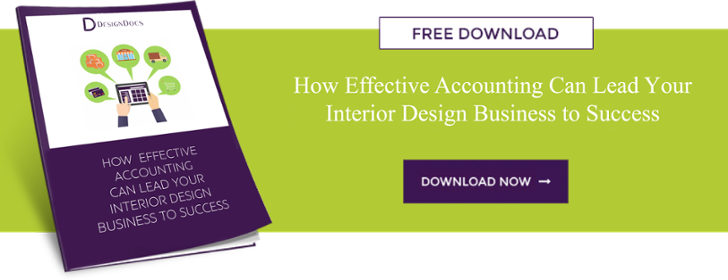Established or start-up, no matter where you are on the journey of building your interior design firm, having a well-thought-out financial plan is a must. Even the most creative creatives throughout history have understood the importance of planning in helping them achieve success. Take Picasso, for example, who famously said, "our goals can only be reached through a vehicle of a plan in which we must fervently believe, and upon which we must vigorously act. There is no other route to success."
And, at the heart of any business's success are its financials. Because let's face it – we can all dream about running a successful interior design business and reaching the top of our industry. Still, if you're not managing the finances properly the company won't reach its full potential.
Cue a long-term strategic financial plan. A financial plan will help you visualize where you want your design firm to be in three months, one year, or five years. It'll help you define the steps you need to take to get there, and it will help you pinpoint where current resources might be lacking that could be holding you back.
But where do you start when you're trying to make said financial plan? Read on below as we tackle the 4 steps to creating a long-term strategic financial plan for your interior design business.
1. UNDERSTAND YOUR CURRENT FINANCIAL POSITION
The first step to creating a long-term strategic financial plan is to have a clear picture of where your business is currently. Understanding this will help you accurately chart out how you will reach the goals you have your sights set on.
Regardless of whether you engage with an accountant, a bookkeeping firm, or you handle the financials yourself, get a hold of your company's balance sheet. This statement will help you see the actual financial position of your company. It includes any assets (what is owned by the business), liabilities (what is owed by the business), and equity (what has been invested into the business). By analyzing your balance sheet, you'll be able to see a snapshot of your company's financial health at that specific point in time. You will also quickly set realistic short-term and long-term goals when you're formulating your strategic plan.
2. SET SMART GOALS
Now you have a clear understanding of your company's financial position; you can set some goals with realistic timelines. Your goals might relate to bringing on new staff, expanding into other locations, or simplifying your workflow to allow for greater operational efficiency.
Regardless of what they are, one of the most important things to keep in mind when setting them is to keep them SMART. SMART goals are specific, measurable, achievable, relevant, and time-bound (yep, it's an acronym). For example, it's easy to list one of your goals as "increase revenue." However, this statement is vague and doesn't explain what you need to accomplish to make it happen. A SMART goal alternative could be something like, "take on five, $1 million home projects in 5 years." This goal sets a solid timeline. It also removes any generalities or guesswork by clarifying what needs to be done to achieve it.
3. GET EVERYONE ON BOARD
If you manage a team, it's essential to make sure that everyone is on board with the goals you're trying to achieve. By openly communicating them to staff, it illustrates how valuable they are to you and how instrumental you see them in helping to create your interior design firm's success. Ensure you clearly outline their roles and responsibilities, so there is no ambiguity over expectations, and they're not left wondering how you see them fitting into the bigger picture.
If you're a one-man (or woman) band, share your goals and plan with a mentor, confidant, friends, or family. You might be surprised how even just saying your goals aloud helps you hold yourself accountable and set the wheels in motion.
4. ASSESS, REASSESS, AND REWORK AS NEEDED
As with any long-term goal, sometimes the goalposts change. The last year and a half have been a stark reminder of this. Many companies have had to pivot, adapt and diversify in response to the global pandemic.
Ensure you're continually checking in with your goals and assessing how you're tracking. If you're struggling to meet a KPI, take a closer look into it. Try to ascertain why it's not being met and whether you need to change something within your game plan so that you can reach it.
Look to see what tools you have available that allow you to know how you measure up against specific KPIs quickly. For example, the reporting function in DesignDocs enables you to quickly and easily generate reports on many different operational aspects of your business. From project summary and vendor summary reports to sales and profit reports, cash flow reports, time analysis reports, and more. With a click of a button, you can easily quantify what's working and what's not so that you can adjust accordingly.
And remember, don't keep doing what isn't working! Running a successful interior design business is not easy, and you shouldn't be afraid to rework or adjust a goal if needed. As with any long-term strategic plan, a considerable amount of time may pass between when you set a goal and when it becomes visible on the achievement horizon. Your business will most likely evolve within this time frame, so your goals might also need to.




